Jailed Iran Trade Unionist Defiant Despite Health Problems

Trade unionist Reza Shahabi has been questioned while suffering from high blood pressure and other complaints, the campaign for his release said Monday.

Trade unionist Reza Shahabi has been questioned while suffering from high blood pressure and other complaints, the campaign for his release said Monday.
Shahabi, a member of the Workers Syndicate of Tehran and Suburbs Bus Company (Sherkat-e Vahed), was arrested following a recent strike and protests by Tehran bus drivers. The campaign calling for his freedom said in a phone call from prison he had told his family he had high blood pressure, head and back ache, and that half his body was numb.
Shahabi was arrested May 12 as Tehran’s bus drivers began a strike over unpaid wages, creating chaos across the city with security forces in the streets and the government wary of possible protests over rising food prices.
Shahabi defended his meeting with two French citizens, trade union leader Cecile Kohler and her husband, after pictures were broadcast. Shahabi told his family during the phone call that there was nothing unusual in meeting trade union activists, although the pair, subsequently arrested, were in Iran as tourists.
In 2012 Shahabi was jailed for seven years on security charges - "gathering and colluding against state security" and "spreading propaganda against the system – two years after he was first imprisoned.
The bus workers syndicate said earlier in the month that a dozen drivers were detained after the strike.

President Ebrahim Raisi said Monday Iran will “definitely” take revenge for the spectacular assassination of a Revolutionary Guard Qods Force colonel in Tehran.
“Revenge against the criminals for the blood of the great martyr [Hassan Khodaei] will definitely be taken, without any doubt” Raisi who was speaking to reporters before leaving Tehran for Oman for an official visit said.
In lightly veiled terms, Raisi accused the United States and Israel for the assassination saying the “global arrogance” and those, who he said, had been defeated in battlefields” by defenders of Shiite holy shrines in Syria had resorted to assassinations due to their “frustration”.
Colonel Hassan Sayyad-Khodaei, who Israeli media say was the acting commander of an elite Qods (Quds) Force unit, Unit 840, was shot dead behind the wheel of his unarmored Iranian-made Kia Pride by two gunmen who fled the scene on a motorbike.
The colonel’s name appeared as Sayyad-Khodayari in earlier reports.
The assassination took place in front of Sayyad-Khodaei ’s home on Mojahedin-e Eslam street very close to the Iranian Parliament in central Tehran in broad daylight.
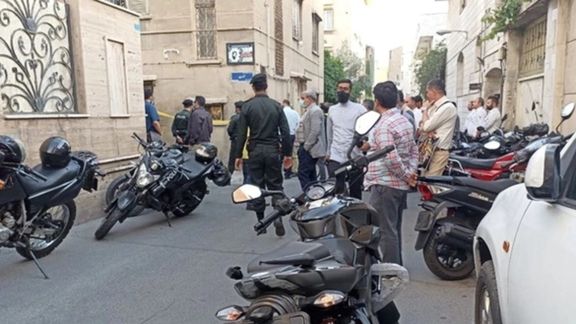
There is no mention of Unit 840 of Qods Force, the extraterritorial arm of the IRGC, in Iranian media. The existence of a such a unit has only been reported by Israeli media, which in November 2020 reported that Israeli Defense Forces (IDF) had accused Unit 840 of placing explosives on Syrian border.
IRGC Spokesman Ramezan Sharif on Monday blamed intelligence services of the “global domination system and Zionism” for the assassination which in Iranian official rhetoric refer to the United States and Israel. Armed Forces’ Spokesman Abolfazl Shekarchi said intelligence bodies are investigating the assassination and will announce its results later.
Earlier this month, Mansour Rasouli, an Iranian man who was seen in a video confessing to planning assassinations on behalf of the IRGC claimed in another video shared on social media that he was coerced by unknown people, allegedly Mossad agents, into making the confession.
Israel’s Channel 13 news on Sunday claimed that Rasouli had been one of the operatives under Sayyad-Khodaei ’s direction.
Israel’s Channel 12 also claimed that Sayyad-Khodaei had also been behind an attempt by Iranian operatives recently uncovered by Shin Bet to lure Israeli academics, businesspeople, and former defense officials abroad to kidnap them as well as alleged plot to kill five Israelis in Cyprus.
Diplomatic sources who spoke to Iran International in April said the man in charge of the alleged assassination plots was a member of the secretive Unit 840 whose mission is to conduct operations against Western targets and Iranian opposition groups and individuals.
In another statement that seemed like an attempt to compensate for the security lapse in Tehran, the IRGC and Iran's Intelligence Ministry announced they had discovered and captured a team of "thugs" linked with Israel's Mossad.
The statement said the Israeli intelligence networks "were engaged in stealing and damaging public and private properties, kidnapping and getting forced confessions".
Iranian state-run media on Sunday, around the time of the assassination, also said the IRGC’s intelligence organization had arrested members of an Israeli spy ring operating in the country.
In recent years Iran has blamed Israel for the assassination of its nuclear scientists as well asMohsen Fakhrizadeh, said to be Iran’s top nuclear man, in November 2020 in a highly complicated operation east of the capital Tehran involving a remotely-controlled one-ton automated weapon that had been smuggled into the country in pieces.
Iran has also accused Israel of sabotage operations against its nuclear facilities including an explosion in April 2021 that inflicted major damage to the Natanz uranium enrichment site.
Israel has never officially taken responsibility for any of these assassinations and sabotage operations but also never denied involvement.
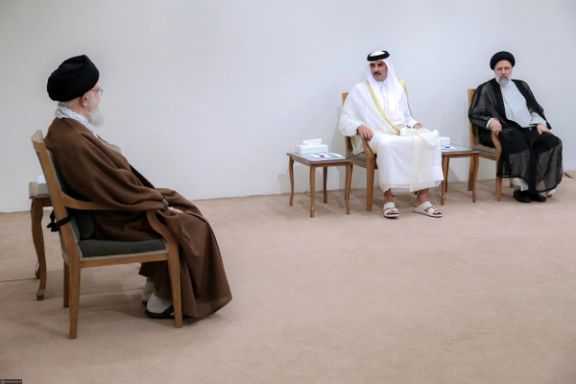
Al-Jazeera television has altered remarks attributed to Iran Supreme Leader Ali Khamenei over nuclear talks, after criticism from spokesman Saeed Khatibzadeh.
A report on the Doha-based channel citing Qatari foreign minister Mohammed bin Abdul Rahman Al-Thani’s account of Qatar emir Sheikh Tamim bin Hamad Al-Thani’s May 12 meeting with Khamenei had mentioned the word “compromise, attributing it to Supreme Leader Ali Khamenei.
Both Al-Jazeera and Reuters news agency have dropped the word ‘compromise’ from their reports, now citing the Qatari foreign minister saying that Doha had been informed by Iran that the JCPOA negotiations matters were "under review."
Iran’s foreign affairs spokesman Saeed Khatibzadeh, quickly responded Saturday, telling Tasnim news agency that Foreign Minister Al-Thani’s remarks had been deliberately misinterpreted by some media outlets and in any case falsely attributed to Khamenei.
The leader “never spoke of any compromise over the issue” during the meeting, Khatibzadeh said. "The Supreme Leader … told the Emir of Qatar: 'We have always said that negotiations should be productive and not a waste of time. The Americans know what to do regarding this.’"
Khatibzadeh insisted that the Qatari foreign minister had referred to Iranian officials rather than Khamenei, and that the translation of ‘compromise’ in Persian-language media had given a misleading sense of Iran making concessions rather than resolving disagreements.
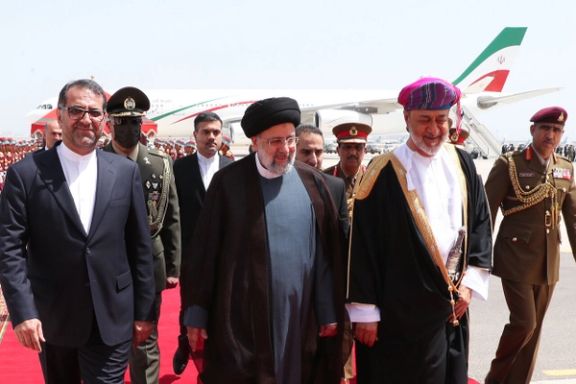
Iranian President Ebrahim Raisi arrived in Oman on Monday for a one-day visit to meet Omani sultan and senior officials to discuss ways to bolster bilateral cooperation.
Upon arrival at the Royal Special Airport in Muscat, Raisi was welcomed by Sultan Haitham bin Tariq Al Said. His official reception is expected to be held in Al-Alam Palace.
He is also scheduled to hold meetings with Oman’s prime minister and foreign minister, Iranians residing in Oman, and Omani businesspeople.
Before Raisi’s visit, Iranian Oil Minister Javad Owji visited Muscat and held a meeting with his counterpart Mohammed Al Rumhi, where the two agreed to revive an offshore gas pipeline project that dates back to about two decades ago.
Iran and Oman signed a memorandum of understanding (MoU) in 2003 to construct a 200-km pipeline from Iran’s Kuh-e Mobarak to Oman’s Sohar port, estimated at the time to cost about $1.2 billion. Based on the deal, Iran was expected to start delivering 10 billion cubic meters per year (bcm/yr) to Oman in 2008 for 25 years. But the deal never materialized due to increasing tensions between Iran and the West, resulting in international sanctions imposed gradually around 2010 to restrict Tehran’s nuclear program.
Neither Iran nor Oman has the technology to lay a pipeline in the deep waters of the Sea of Oman that in some spots reach the depth of one kilometer. Iran has capacity only to construct offshore pipelines in less than 150-meter depth.
As long as American sanctions against Iran remain, no major global company will be willing to get involved in the pipeline project.
Muscat has traditionally played a mediating role between Tehran and Washington.
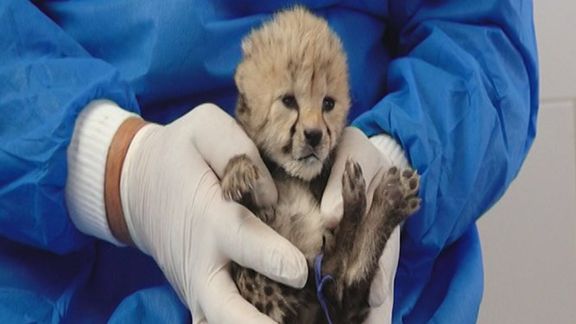
Following the death of the second of three Asiatic cheetah cubs born in captivity in Iran and widespread criticism, the Department of Environment says no one was at fault in the process.
Ali Salajegheh representing the department said on Sunday that a fact-finding taskforce will assess and announce any shortcomings and negligence in dealing with the reproduction process.
Shifting the blame to the country’s lack of experts or veterinarians with experience in breeding carnivores in captivity, he said on Friday an Indonesian veterinarian will arrive in Iran to help keep the third cub alive.
"The cause of death of the cubs is being investigated and the result will be announced after the post mortem," said deputy environment minister Hassan Akbari on Wednesday after the death of the second cub, which was a blow to conservation efforts for the critically endangered subspecies.
Akbari said initial speculations of veterinarians suggest that poor quality milk has caused the death of the second cub.
The second offspring of the Asiatic cheetah, called Iran, happened just two weeks after the first cub from the litter died, purportedly due to “congenital malformation of the left lung”.
Iran’s cubs were born in the Touran Wildlife Refuge by caesarean section on May 1, in what the department said was the first birth of an Asiatic cheetah in captivity.
Iran is the last country in the world where the critically endangered Asiatic cheetah can be found in the wild, and authorities launched a United Nations-supported protection program in 2001. In January, Akbari said only a dozen individuals were left in the wild -- down from an estimated 100 in 2010.
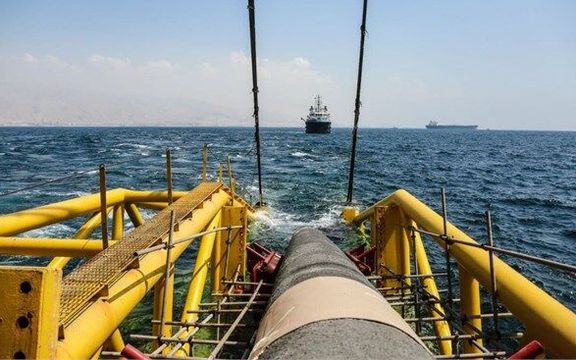
Iran’s official news agency IRNA reported that during oil minister Javad Owji’s visit to Oman the two countries agreed to revive an offshore gas pipeline project.
Neither Oman’s oil ministry nor Omani media have confirmed this agreement after the Saturday meeting.
Iran and Oman signed a memorandum of understanding (MoU) in 2003 to construct a 200-km pipeline from Iran’s Kuh-e Mobarak to Oman’s Sohar port, estimated at the time to cost about $1.2 billion. Based on the deal, Iran was expected to start delivering 10 billion cubic meters per year (bcm/yr) to Oman in 2008 for 25 years. But the deal never materialized due to increasing tensions between Iran and the West, resulting in international sanctions imposed gradually around 2010 to restrict Tehran’s nuclear program.
Neither Iran nor Oman has the technology to lay a pipeline in the deep waters of the Sea of Oman that in some spots reach the depth of one kilometer. As long as American sanctions against Iran remain, no major global company will be willing to get involved in the pipeline project.
Iran has capacity only to construct offshore pipelines in less than 150-meter depth.
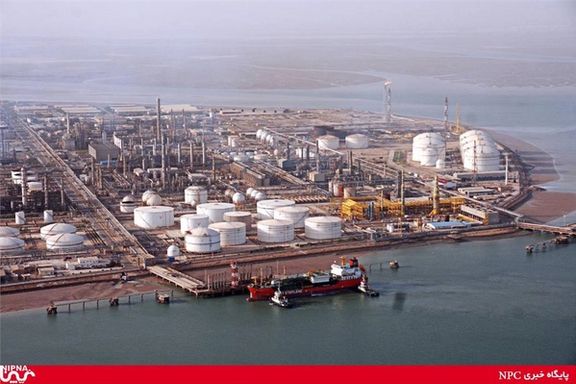
During the last two decades, Iran and Oman had tens of meetings to keep the deal alive, without any progress. Last time, several months before the US withdrawal from the nuclear deal with Iran (JCPOA) in May 2018, Iran and Oman had agreed to revive the project.
Why Oman needs Iranian gas?
During last decade, Oman’s annual gas production growth stood at 4.4% in average, but its annual demand grew by 6.3%. The country then began facing gas shortage for its LNG plants with 10.7 million tons (about 15 bcm/yr) capacity to liquefy the gas and export to the international markets.
According to British Petroleum’s statistics, Oman’s LNG exports broke a 14.8 bcm record in 2019 but declined to 14 bcm in 2020.
Iran plans to use the idle capacity of Oman’s LNG plants (2 bcm/yr in future) to liquefy its gas and export to international markets. The rest of Iranian gas is projected to be delivered to Oman for domestic use.
BP has been developing Oman’s Khazzan gas field to boost its production capacity and Oman’s LNG plants’ capacity is also expected to increase to around 16 bcm/yr in 2022.
But, Oman’s gas reserves are only 700 bcm and regarding its 50 bcm/yr domestic annual demand (including 13 bcm/yr gas injection to oil fields to enhance their productivity) as well as 16 bcm/yr LNG plant capacity, it needs to import gas in the long term.
Iran with 33 trillion cubic meters of gas reserves ranks second globally after Russia, but it faces a huge amount of gas shortage in winters, when domestic demand soars to peak level. Iran is deprived of foreign expertise and an estimated $40 billion investment needed to boost its gas output.
On the other hand, Iran’s gas demand increased by 6 bcm to 238 bcm last year. Its annual gas demand growth was 5.2% in average during last decade, while its gas production growth is very low due to sanctions.
Mohsen Khojastepur, former general director of the Iranian national oil company said in November 2021 that if new investments are not made in the natural gas industry, the country will become a net importer in the next few years.